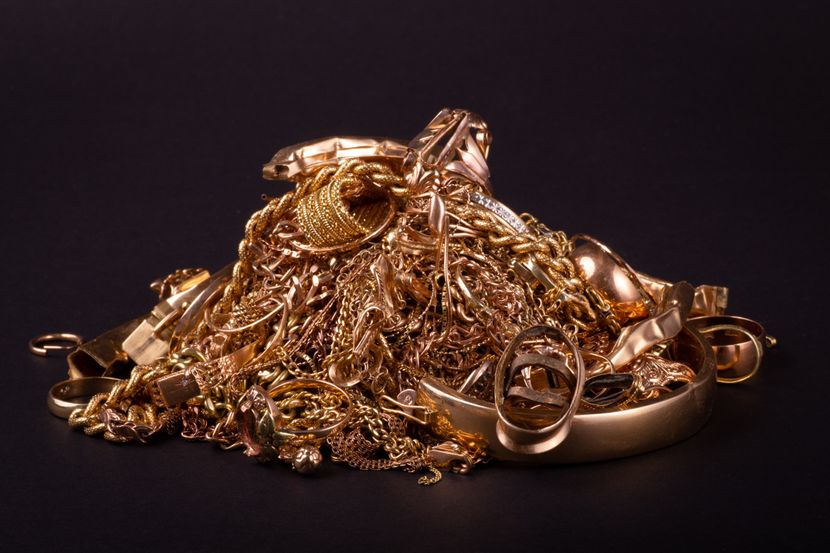Is Your Pre-Loved Jewellery Breaking the Rules?
Published: 7th August 2020

Newly manufactured jewellery makes its way to an Assay Office as a vital part of the supply chain, whether submitted by the factory, jeweller, silversmith, wholesaler or retailer. This ensures that the articles are hallmarked at the point of sale as required by the Hallmarking Act.
But what about jewellery that was made years ago, and is now being re-sold as second hand? Do these pre-loved items being sold on auction sites, in pawnbrokers’ shops or jewellers need hallmarking too?
The answer to this question is not straightforward, but there are a few rules to look out for as set out in the Hallmarking Act.
What does the Hallmarking Act Ensure?
The basic principle of the Act is that you should not describe a precious metal article as such without a hallmark. Our independent verification of the purity of the metal protects both the consumer and the honest trader.
Subject to the provisions of the 1973 Hallmarking Act, any person who, in the course of a trade or business —
- (a) Applies to an unhallmarked article a description indicating that it is wholly or partly made of silver, palladium, gold or platinum or
- (b) Supplies, or offers to supply, an unhallmarked article to which such a description is applied, shall be guilty of an offence.
What about antique or second hand items?
The Hallmarking Act has changed several times over the years, and some items were not previously required to be hallmarked. Platinum and palladium items were not hallmarked before 1975 and 2009 respectively. For this reason, these metals are exempt if manufactured before these dates:
- Any article which is wholly or mainly of platinum, and which was manufactured before 1st January 1975 is exempt.
- Any article which is wholly or mainly of palladium, and which was manufactured before 1st January 2010 is exempt.
Some articles, for example gold rings (other than wedding rings) were also exempted before 1975 and the following exclusions now apply:
The following articles of gold, if manufactured before 1st January 1975, and (except in the case of articles mentioned in sub-paragraph (d) below) of minimum fineness-
- (a) Rings, except wedding rings, pencil cases, lockets, watch chains and thimbles.
- (b) Articles consisting entirely of filigree work.
- (c) Articles so heavily engraved or set with stones that it is impossible to mark them without damage.
- (d) Jewellers works, that is the actual setting only in which stones or other jewels are set and jointed sleeper earrings.
The following articles of silver, if manufactured before 1st January 1975 and (except in the case of articles mentioned in paragraph (e) below) of minimum fineness –
- (a) Lockets, watch chains and stamped medals.
- (b) Mounts the weight of which is less than 15.55 grams.
- (c) Articles consisting entirely of filigree work.
- (d) Silver articles the weight of which is less than 7.78 grams.
- (e) Jewellers works, that is the actual setting only in which stones or other jewels are set.
Articles which should have been hallmarked when they were made, but bear no hallmark, are now treated as exempt if they were manufactured before a specific date. Therefore, any pre-1950 item may now be described and sold as precious metal, if the seller can prove that it is of minimum fineness and was manufactured before 1950.
Any article is exempt which;
- (a) Is wholly or mainly of gold or of silver or of gold and silver assaying in all its gold parts not less than 375 parts per thousand and in all its silver parts not less than 800 parts per thousand; and
- (b) Was manufactured before the year 1950 and has not since the beginning of the year 1950 been the subject of any alteration which would be an improper alteration if the article had previously borne approved hallmarks
Hopefully, these guidelines will help you decide whether you need to submit your items for hallmarking. If you have any questions regarding this issue, don't hesitate to get in touch. The team here at Sheffield Assay Office will be more than happy to advise you further.
The Sheffield Assay Office was established in 1773, under an Act of Parliament and today the company assays and hallmarks the precious metals - silver, gold, platinum and palladium. Sheffield Assay Office is one of only four UK assay offices who all work to uphold the Hallmarking Act of 1973 and continue to ensure consumer protection for customers purchasing precious metals.
To find out more about the whole range of services offered by Sheffield Assay Office, such as our hallmarking and analytical services, please email us at info@assayoffice.co.uk or complete the contact form on our website at http://www.assayoffice.co.uk/contact-us ,
Sign up here to all the latest news from Sheffield Assay Office direct to your inbox